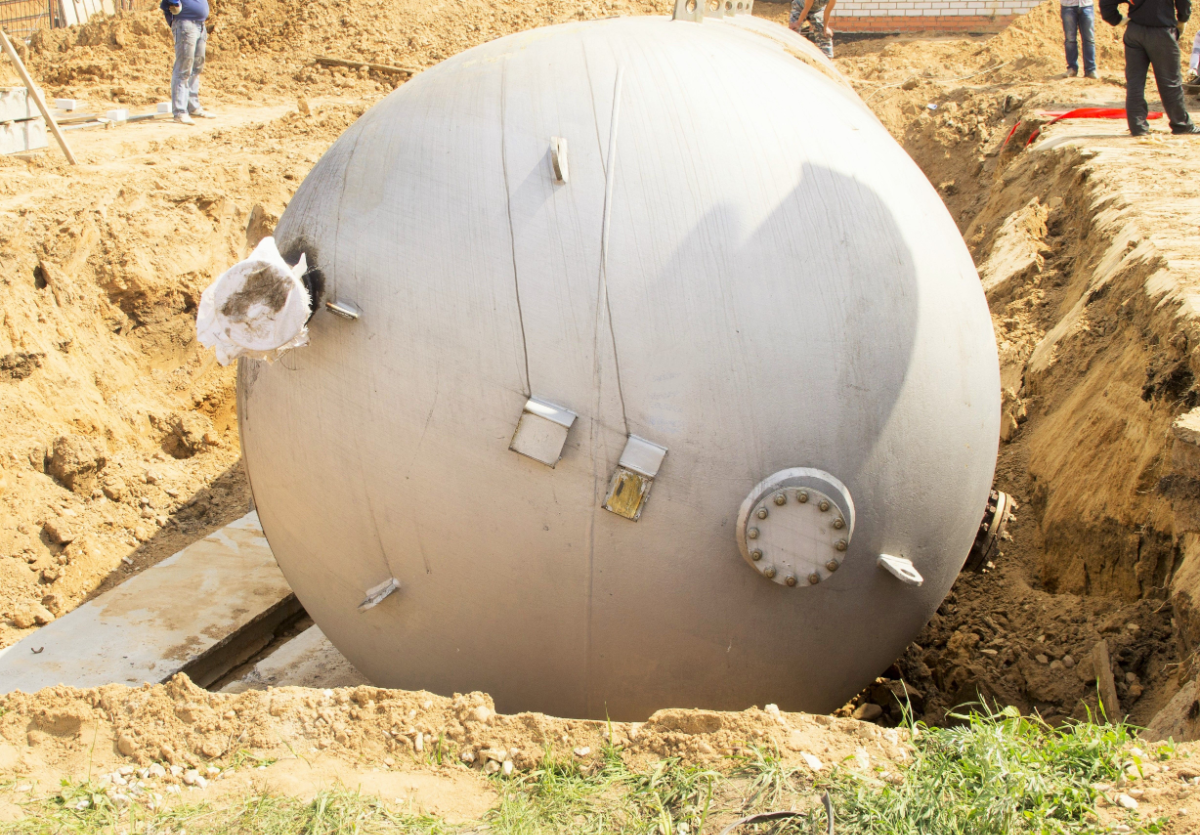There’s something about older homes that exudes charm, character, and hidden heating oil tanks. If you’ve recently moved into a house that’s been around for a few decades, or you’re in the middle of prepping a property for sale, you might be standing on more than just lawn. Buried beneath the surface could be a steel time capsule: a residential underground oil tank that once fueled a furnace but now sits quietly rusting below your feet.
At JnJ Environmental, we’ve seen it all. That innocent dip in the yard? That awkward pipe in the basement corner? These are often more than quirks of an old house; they’re red flags. And while some might look the other way, ignoring the problem doesn’t make it vanish. The longer an underground storage tank lingers, the more likely it is to become a headache. Everything from leaks, soil contamination, regulatory problems, and property value hits aren’t just possibilities; they’re very real risks.
Why You May Not Know You Have an Underground Storage Tank in Your Yard
Back in the day, heating oil was a go-to fuel source for residential heat, especially across the Northeast. As natural gas became the king of energy sources and homeowners switched to new systems, many oil tanks were simply abandoned in place, out of sight, out of mind. Add in a couple of property sales, some landscaping changes, and years of forgetfulness, and you’ve got an entire population of homeowners who have no idea they’re hosting a petroleum relic underground.
Signs That You Have a Residential Underground Storage Tank
While an underground storage tank can go unnoticed for years until it starts leaking, there are some ways to tell there’s one on your property before it becomes a major issue. Knowing the subtle and not-so-subtle signs that you’re dealing with an underground storage tank can help you prevent potential leaks and spills before they occur. Here are some of the tell-tale signs:
Basement Piping
Take a walk down to your basement. Do you see any capped pipes sticking out of the floor or wall? Especially ones that don’t seem to connect to current plumbing or heating systems? That could be an old feed line from a storage tank that once supplied heating oil to your furnace. These pipes are often overlooked when new systems are installed, but they remain as visible reminders of past infrastructure. If the pipes are still in place, there’s a decent chance the tank is still buried underground on your property somewhere.
New Concrete Patches
That odd section of your basement floor with newer concrete might not be a coincidence. Homeowners sometimes seal off old oil pipe entry points or fill access ports without removing the tank, which can lead to issues. A fresh patch in an otherwise original floor can be a giveaway, especially when it’s right near a furnace or old fuel line.
Unexplained Yard Depressions
Notice a soft spot or slight dip in your lawn that always seems spongy after rain? Tanks can corrode, collapse, and cause the surrounding soil or sand to shift, leaving a depression in the ground. These yard depressions may signal a void left behind by a deteriorating underground storage tank. A subtle indent today could become a full sinkhole or yard contamination tomorrow.
Visible Yard Pipes
If there are small metal pipes, often 1–2 inches in diameter, protruding from the ground in the yard near the house, they may have been used for oil delivery or venting. These pipes can rust and blend in, but they’re often the smoking gun that a storage tank still lurks underground. They don’t belong to your plumbing or irrigation systems, and they weren’t part of a random DIY project.
Why You Shouldn’t Wait to Deal With Underground Storage Tanks
The longer a steel tank stays buried, the higher the stakes. Corrosion doesn’t pause. Heating oil and other petroleum products can leak into the soil, contaminate groundwater, pollute indoor air, and lead to environmental regulations being invoked. What starts as a minor oversight can balloon into a major cleanup. We’re talking full environmental remediation, not just a quick patch job. Leaving a tank untouched invites cost, mold, pollution, and risk, all in one tight, rusty package.
Schedule Your Next Underground Storage Tank Removal Service in Southeastern PA Today
Removing an underground storage tank doesn’t just protect your health; it protects your peace of mind. Whether you’re dealing with a house you just bought, prepping for a real estate transaction, or finally addressing a “someday” project, now is the time to act.
The JnJ Environmental team brings decades of hands-on experience in site remediation, soil testing, and fuel tank removal to every residential project we undertake. We use radar, vacuum trucks, and good old-fashioned know-how to identify, excavate, and transport underground storage tanks quickly and safely. We take care of the sludge, the pipework, and the paperwork, making regulatory compliance one less thing for you to worry about. If there’s oil, fuel, diesel, gas, or rust hiding beneath your lawn, we’ll find it and handle it the right way.
The sooner you act, the fewer surprises you’ll deal with down the line. Reach out to JnJ Environmental today and take the first step toward reclaiming your property and protecting what matters most.

